Welcome to the enchanting world of DIY garden projects, where your backyard transforms into a personal oasis of creativity and growth. Whether you’re sowing your first seeds or refining a seasoned green thumb, these projects offer something uniquely rewarding for every gardener. With each new endeavor, you not only enhance the beauty and functionality of your outdoor space but also cultivate a deeper connection with nature and your own creative instincts.
Embarking on DIY garden projects can be a delightful journey filled with discovery and satisfaction. From crafting charming planters to building inviting garden paths, these activities allow you to customize your garden to reflect your personality and vision. In this article, we’ll guide you through a variety of projects that cater to all skill levels, ensuring that every gardener finds joy and success in their efforts.
You’ll discover practical tips and insights that make even the most ambitious projects achievable. Our collection of ideas will help you make the most of your garden space, no matter its size or shape. With a bit of inspiration and guidance, you’ll soon see how each project not only enhances your garden but also enriches your gardening experience. Join us on this creative journey, and watch your backyard blossom into a masterpiece of your own making.
Planning Your Backyard Layout
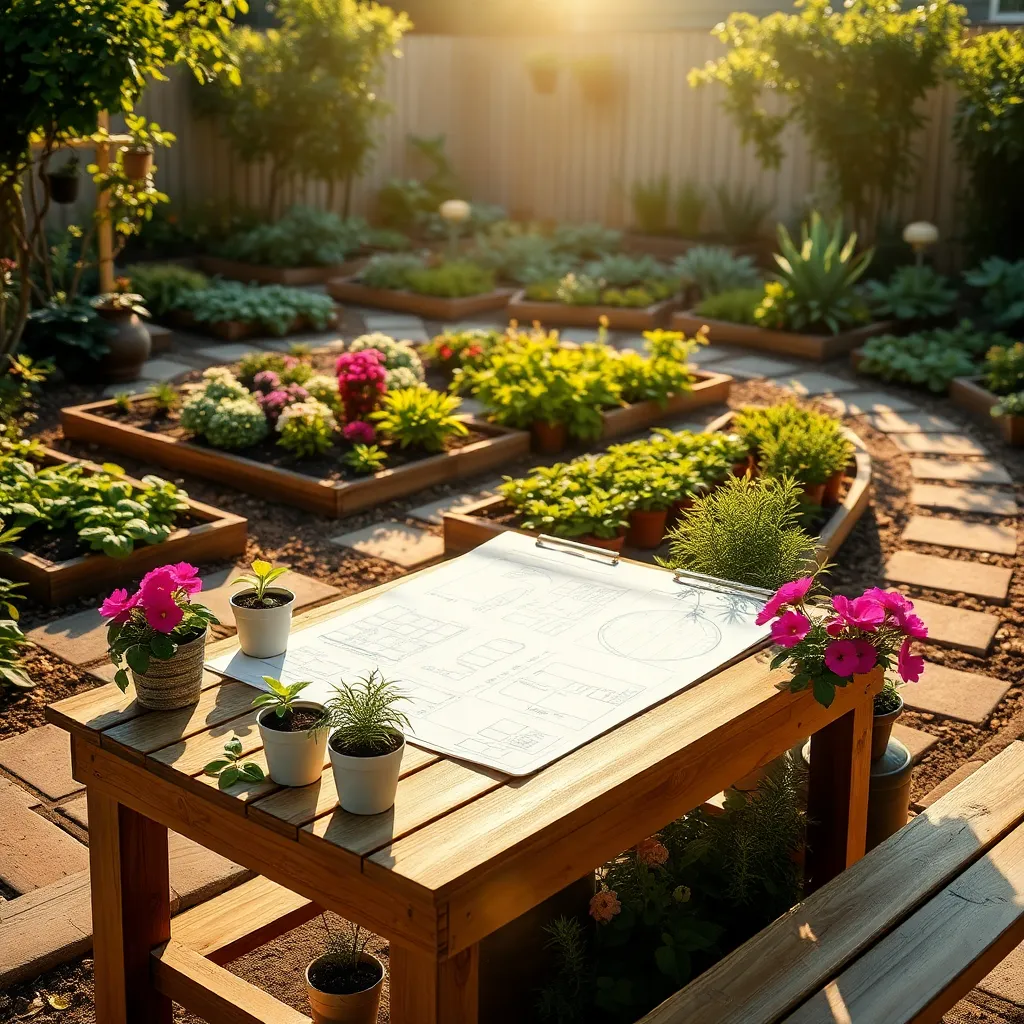
When planning your backyard layout, it’s important to first assess your space and climate. Begin by mapping out where the sun falls during different times of the day, as this will dictate where you plant sun-loving and shade-tolerant species.
Consider your soil type because it affects plant health and growth. Conduct a simple soil test to determine whether your soil is sandy, clay, or loamy, and amend it accordingly with compost or other organic matter for optimal plant health.
Incorporating pathways can make your garden more accessible and visually appealing. Use materials like gravel, stone, or wood chips to create paths that complement your garden’s aesthetics while allowing for easy maintenance.
Grouping plants with similar water and sunlight needs will help ensure each plant thrives in its specific location. Constructing raised beds can be advantageous, especially in areas with poor soil or drainage issues, providing better control over soil conditions.
For gardeners looking to maximize space, consider vertical planting techniques. Use trellises, wall planters, or hanging baskets to grow vining plants and additional flowers without overcrowding ground space.
Building Raised Garden Beds
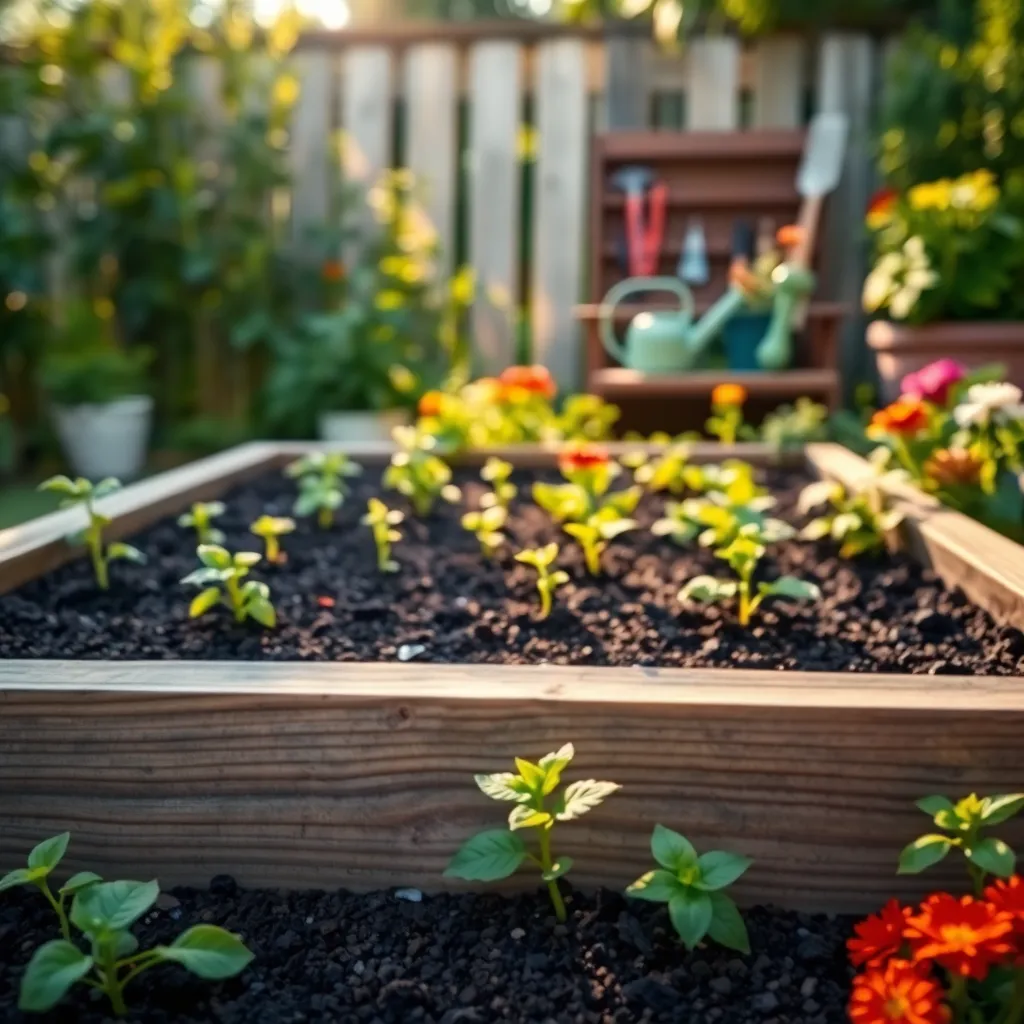
Building raised garden beds is a fantastic way to enhance your backyard gardening experience. These beds provide excellent drainage, help control soil quality, and can be built to a height that reduces strain on your back.
To start, choose a location with at least six hours of sunlight per day to accommodate most vegetables and flowers. Ensure the area is level to provide consistent growing conditions and prevent water from pooling at one end.
The materials for raised beds can vary, but untreated cedar or redwood are popular choices due to their durability and resistance to rot. Avoid using treated wood, as chemicals can leach into the soil and affect plant health.
When filling your raised bed, use a mix of topsoil, compost, and peat moss to create a nutrient-rich growing environment. Aim for a ratio of 60% topsoil, 30% compost, and 10% peat moss to ensure a balanced soil structure that retains moisture while allowing excess water to drain away.
For those with a bit more experience, consider incorporating a drip irrigation system to simplify watering. This system can be connected to a timer, ensuring your plants receive consistent moisture without overwatering.
Finally, remember to rotate your crops each season to prevent pests and diseases from becoming established in your soil. Rotating between leafy greens, root vegetables, and fruiting plants can help maintain soil health and maximize your garden’s productivity.
Creating a DIY Water Feature
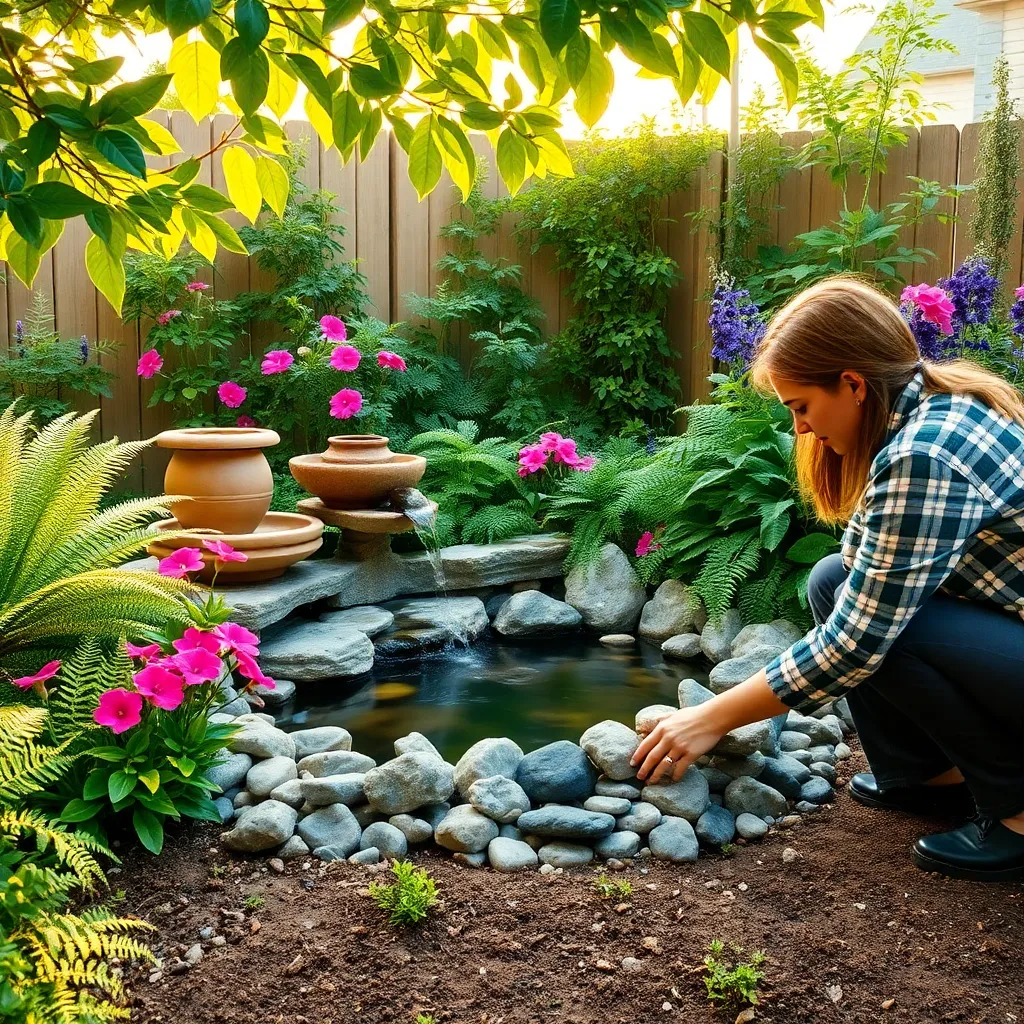
Transforming your backyard with a DIY water feature can add both tranquility and visual appeal. Start by selecting a suitable location that receives partial shade to prevent excessive algae growth in the water.
Next, gather your materials, which generally include a water pump, a container or basin, and decorative stones. Choose a pump that fits the size of your container to ensure a steady flow without splashing water excessively.
Once your materials are ready, begin by placing the pump inside the container and running its cord to a power source. It’s important to ensure the pump is fully submerged to maintain its efficiency and longevity.
Arrange stones around the pump to conceal it and create a natural look. Vary the sizes of the stones to add texture and encourage gentle water flow over them.
Finally, fill the container with water and plug in the pump to start your water feature. Regular maintenance, like cleaning the pump and checking water levels, will keep your feature running smoothly.
Crafting Decorative Garden Paths
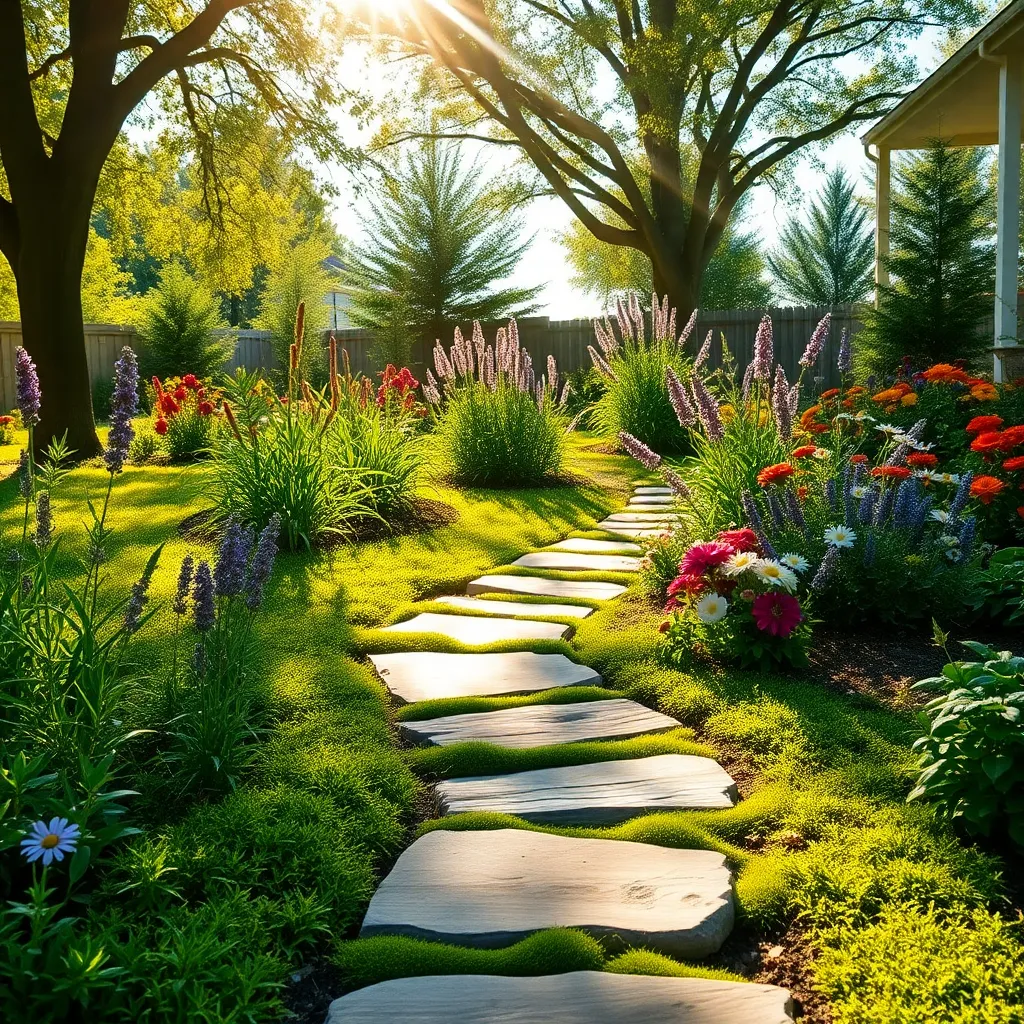
Transforming your backyard with decorative garden paths can enhance both the functionality and aesthetic of your outdoor space. Start by choosing durable materials like stone, brick, or gravel, which are not only visually appealing but also long-lasting and low maintenance.
Before laying down your path, plan its route by marking it with a garden hose or string to ensure it flows naturally with your garden’s layout. Dig a trench about 4-6 inches deep to accommodate the path material, ensuring proper drainage and stability.
For a basic gravel path, lay down a layer of landscape fabric to prevent weeds from growing through. Next, fill the trench with crushed stone or gravel, leveling it with a rake to create a smooth walking surface.
To add a touch of sophistication, consider incorporating stepping stones into your garden path. Position these stones about 24 inches apart, allowing for a comfortable stride, and secure them in place by pressing them into the gravel or soil.
For those looking to experiment with patterns, try a herringbone or basket weave design using bricks or pavers. This requires careful alignment and cutting of pieces to fit snugly, providing a professional finish that can elevate the look of your garden.
Finally, maintain your garden paths by regularly checking for loose stones or bricks and trimming any encroaching plants. With these simple yet effective steps, your decorative garden paths will remain an inviting feature of your backyard for years to come.
Installing Outdoor Lighting Solutions
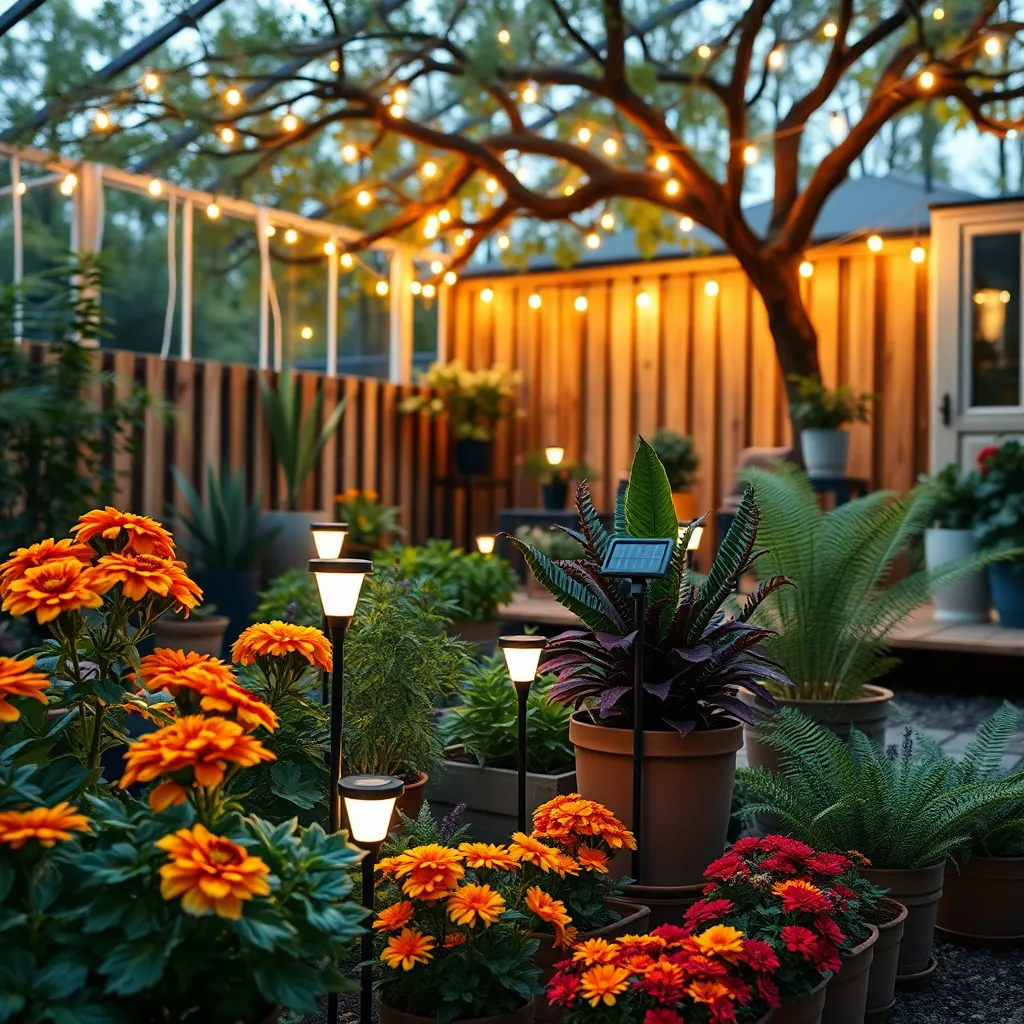
To create a magical ambiance in your backyard, consider installing outdoor lighting solutions. Begin by identifying areas that need illumination, such as pathways, garden beds, or a cozy seating area.
Select lighting fixtures that are designed for outdoor use, ensuring they can withstand weather conditions. Solar-powered lights are an eco-friendly option, requiring minimal maintenance while providing a soft glow.
For a more dramatic effect, use spotlights to highlight specific plants or features like a water fountain or a unique tree. Position these lights at the base of the object, angling them upwards to create striking shadows and depth.
Installing low-voltage lighting is a straightforward project that doesn’t require extensive electrical knowledge. Use a transformer to reduce the voltage, and ensure all connections are secure and weatherproof.
Enhance safety and aesthetics by placing lights along pathways and stairs, spacing them evenly for uniform illumination. This not only adds to the visual appeal but also prevents accidental trips or falls in the dark.
To achieve a professional look, consider using a variety of lighting styles and intensities. Mixing string lights, lanterns, and stake lights can create layers of light, adding texture and interest to your garden space.
Conclusion: Growing Success with These Plants
In exploring the vibrant intersection of DIY garden projects and nurturing relationships, we’ve uncovered five key concepts: collaboration, communication, shared goals, creative problem-solving, and quality time. By engaging in garden projects together, couples can foster collaboration, enhancing their teamwork skills and building a stronger bond. Open communication ensures that both partners feel heard and valued, while aligning on shared goals strengthens their commitment to a common future. Creative problem-solving in the garden can transcend into everyday relationship challenges, and the quality time spent amidst nature cultivates intimacy and connection.
As an immediate next step, why not choose one simple garden project to embark on together this weekend? Whether it’s planting a flower bed or building a birdhouse, let this be an opportunity to grow both your garden and your relationship.
Before you go, be sure to save or bookmark this article. The insights here will serve as a useful guide for nurturing your relationship through shared garden adventures. Remember, the seeds of effort you plant today will blossom into a thriving partnership tomorrow. Embrace the journey, and watch your relationship grow and flourish with every project you undertake together.

